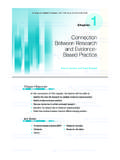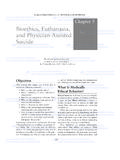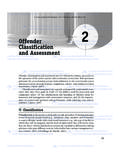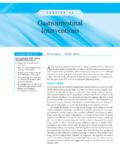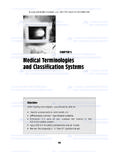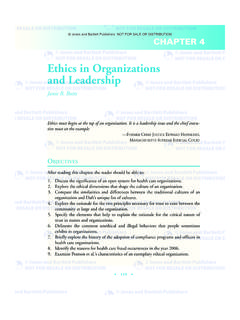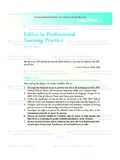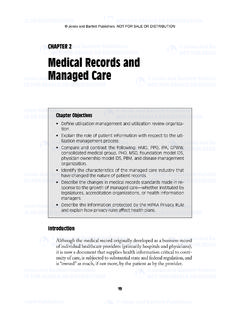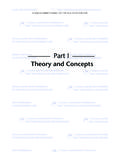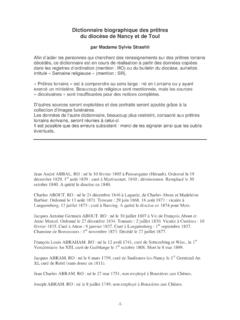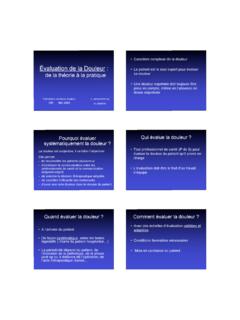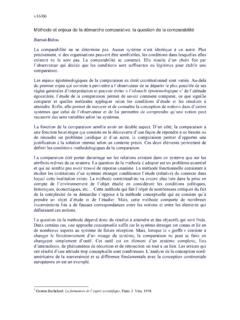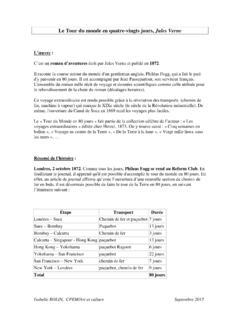Transcription of Management and Motivation - Jones & Bartlett Learning
1 23 CHAPTER2 Management and MotivationNancy H. ShanksLEARNING OBJECTIVESBy the end of this chapter the student will be able to: Frame the context for understanding the concept of Motivation , par-ticularly who and what motivates employees; Provide an overview of the different theories of Motivation ; Identify extrinsic and intrinsic factors that impact Motivation ; Assess misconceptions about Motivation ; and, Suggest strategies to enhance employee are continually challenged to motivate a workforce to do twothings. The first challenge is to motivate employees to work toward help-ing the organization achieve its goals. The second is to motivate employ-ees to work toward achieving their own personal the needs and achieving the goals of both the employer and theemployee is often difficult for managers in all types of organizations.
2 Inhealth care, however, this is often more difficult, in part as a result of thecomplexity of healthcare organizations, but also as a function of the widearray of employees who are employed by or work collaboratively 1/31/07 8:45 AM Page 23 Jones and Bartlett Publishers. NOT FOR SALE OR DISTRIBUTION healthcare providers in delivering and paying for care. The types of work-ers run the gamut from highly trained and highly skilled technical andclinical staff members to relatively unskilled workers. To be successful,healthcare managers need to be able to manage and motivate this widearray of THE CONCEPTA ccording to Webster s New Collegiate Dictionary, a motive is something(a need or desire) that causes a person to act.
3 Motivate, in turn, means toprovide with a motive, and Motivation is defined as the act or processof motivating. Thus, motivationis the act or process of providing a mo-tive that causes a person to take some action. In most cases motivationcomes from some need that leads to behavior that results in some type ofreward when the need is fulfilled. This definition raises a couple of are Rewards?Rewards can take two forms. They can be either intrinsic/internal rewardsor extrinsic/external ones. Intrinsic rewardsare derived from within theindividual. For a healthcare employee this could mean taking pride andfeeling good about a job well done ( , providing excellent patient care).
4 Extrinsic rewardspertain to rewards that are given by another person,such as a healthcare organization giving bonuses to teams of workers whenquality and patient satisfaction are demonstrated to be Motivates Employees?While rewards may serve as incentives and those who bestow rewards mayseek to use them as motivators, the real Motivation to act comes fromwithin the individual. Managers do exert a significant amount of influenceover their employees, but they do not have the power to force a person toact. They can work to provide various types of incentives in an effort to in-fluence an employee in any number of ways, such as by changing job de-scriptions, rearranging work schedules, improving working conditions,reconfiguring teams, and a host of other activities, as will be discussed laterin this chapter.
5 While these may have an impact on an employee s level ofmotivation and willingness to act, when all is said and done, it is the em-24 CHAPTER 2 Management 1/31/07 8:45 AM Page 24 Jones and Bartlett Publishers. NOT FOR SALE OR DISTRIBUTION ployee s decision to take action or not. In discussing Management and mo-tivation, it will be important to continually remember the roles of bothmanagers and employees in the process of Everybody Motivated?As managers, we often assume that employees are motivated or will re-spond to inducements from managers. While this is perhaps a logical andrational approach from the manager s perspective, it is critical to under-stand that this is not always the case.
6 While the majority of employees do,in fact, want to do a good job and are motivated by any number of factors,others may not share that same drive or high level of Motivation . Thosefolks may merely be putting in time and may be more motivated by otherthings, such as family, school, hobbies, or other interests. Keeping this inmind is useful in helping managers understand employee behaviors thatseem to be OF MOTIVATIONP sychologists have studied human Motivation extensively and have de-rived a variety of theories about what motivates people. This section brieflyhighlights the motivational theories that are regularly discussed in man-agement textbooks. These include theories that focus on Motivation beinga function of 1) employee needs of various types, 2) extrinsic factors, and3) intrinsic factors.
7 Each set of theories will be discussed Theories of Motivation Maslow s Hierarchy of Need Maslow (1954) postulated a hierar-chy of needs that progresses from the lowest, subsistence-level needsto the highest level of self-awareness and actualization. Once eachlevel has been met, the theory is that an individual will be motivatedby and strive to progress to satisfy the next higher level of need. Thefive levels in Maslow s hierarchy are Physiological needs including food, water, sexual drive, andother subsistence-related needs; Safety needs including shelter, a safe home environment, em-ployment, a healthy and safe work environment, access to healthcare, money, and other basic necessities;THEORIES 1/31/07 8:45 AM Page 25 Jones and Bartlett Publishers.
8 NOT FOR SALE OR DISTRIBUTION Belonging needs including the desire for social contact and in-teraction, friendship, affection, and various types of support; Esteem needs including status, recognition, and positive regard;and, Self-actualization needs including the desire for achievement,personal growth and development, and movement from one level to the next was termed satisfaction pro-gressionby Maslow, and it was assumed that over time individuals weremotivated to continually progress upward through these levels. While use-ful from a theoretical perspective, most individuals do not view their needsin this way, making this approach to Motivation a bit unrealistic. Alderfer s ERG Theory The three components identified byAlderfer (1972) drew upon Maslow s theory, but also suggested thatindividuals were motivated to move forward and backward throughthe levels in terms of motivators.
9 He reduced Maslow s levels fromfive to the following three: Existence which related to Maslow s first two needs, thus com-bining the physiological and safety needs into one level; Relatedness which addressed the belonging needs; and, Growth which pertains to the last two needs, thereby combin-ing esteem and also added his frustration-regression principle, which postu-lated that individuals would move in and out of the various levels, de-pending upon the extent to which their needs were being met. Thisapproach is deemed by students of Management to be more logical andsimilar to many individuals world views. Herzberg s Two Factor Theory Herzberg (2003) further modifiedMaslow s needs theory and consolidated down to two areas of needsthat motivated employees.
10 These were termed Hygienes These were characterized as lower level motivatorsand included, for example, company policy and administration,supervision, interpersonal relationships, working conditions, salary,status, and security (p. 5). Motivators These emphasized higher level factors and focusedon aspects of work, such as achievement, recognition for achieve-26 CHAPTER 2 Management 1/31/07 8:45 AM Page 26 Jones and Bartlett Publishers. NOT FOR SALE OR DISTRIBUTION ment, the work itself, responsibility and growth or advancement (p. 5).Herzberg s is an easily understood approach that suggests that individ-uals have desires beyond the hygienes and that motivators are very impor-tant to them.
